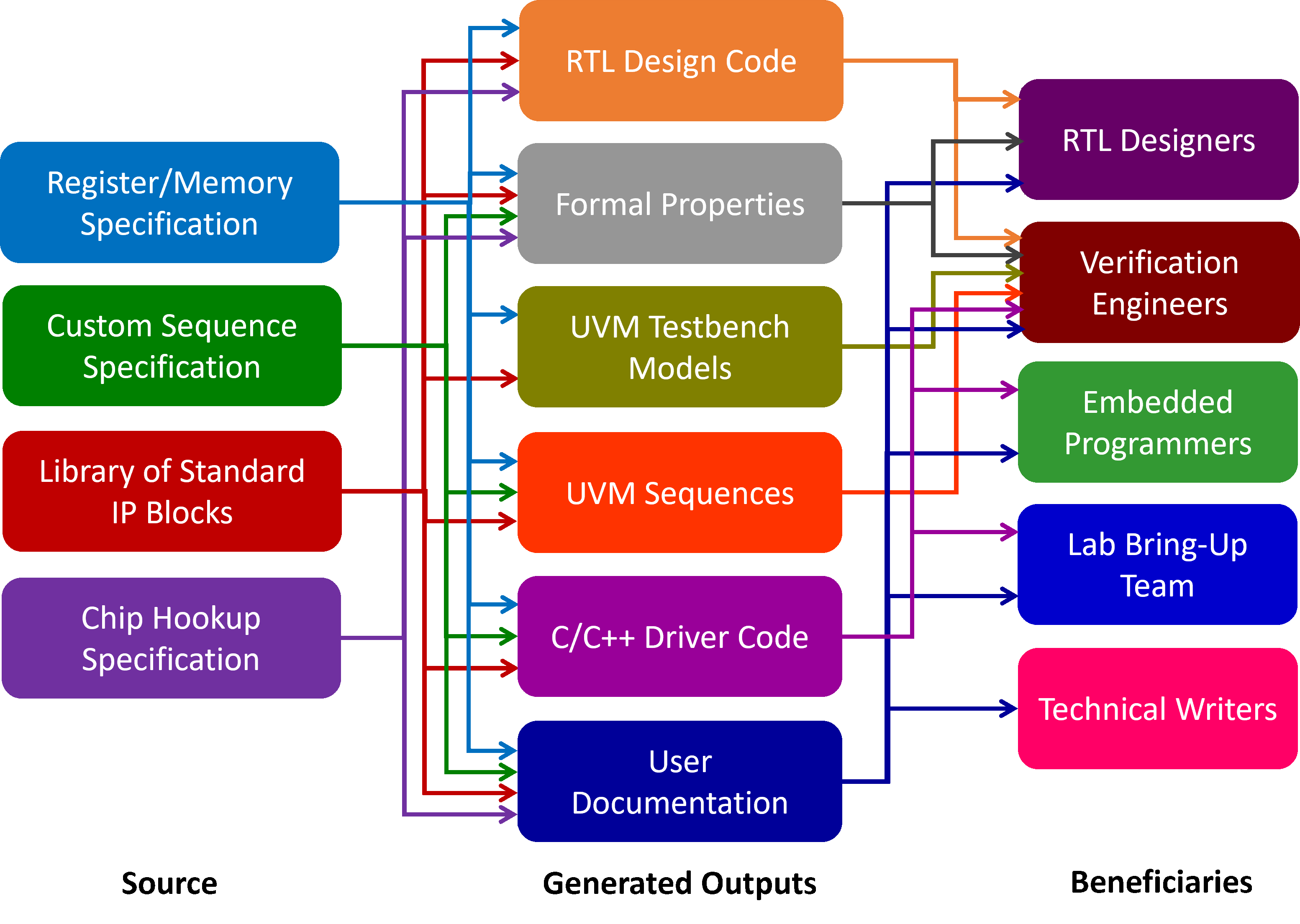As an electronic design automation (EDA) company, Agnisys provides many benefits for chip design and verification engineers. Our specification automation solution generates both the register transfer level (RTL) design and key elements for verification with simulation and formal tools. As the diagram below shows, our solution also provides value to other teams. In this post, I’d like to focus specifically on embedded programmers, since we are seeing increasing interest in our capabilities in this domain.

By embedded programming, I mean just about any type of software that interacts directly with the hardware. This includes boot code, firmware, device drivers, and what is sometimes called hardware-dependent software (HdS). In a system-on-chip (SoC) device, these programs generally run on the embedded processors within the chip, but some parts may run on a host system as well. The key common element is that the software controls and communicates with the hardware by reading and writing a set of control and status registers (CSRs). Because we support register automation, we can facilitate embedded code development by generating the C/C++ header files for the registers in the design.
(more…)







